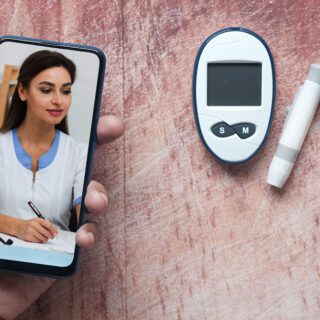

Diabetes is a chronic medical condition in which the body cannot properly use and store glucose (a type of sugar). Glucose is the main fuel source for the body’s cells, and it comes from the food we eat. Insulin, a hormone made by the pancreas, helps glucose get into the cells.
There are two main types of diabetes:
Both types of diabetes can lead to serious health complications if not properly managed. These include heart disease, stroke, nerve damage, kidney damage, eye damage, and amputations.
Diabetes requires more care because it is a chronic condition affecting how the body processes blood sugar (glucose). High blood sugar levels can cause damage to the eyes, kidneys, nerves, and blood vessels, leading to serious complications such as heart disease, stroke, blindness, and amputation.
What Steps Should Be Taken To Properly Manage Diabetes
There are a few things that you can do to manage diabetes effectively.
Remote patient monitoring (RPM) is a healthcare delivery model that allows medical professionals to remotely monitor a patient’s health status using technology, such as smartphones, tablets, and wearable devices. This allows for continuous monitoring of patients without the need for in-person visits and enables healthcare professionals to respond to changes in a patient’s condition quickly.
RPM can be used to monitor a variety of conditions, including diabetes, heart disease, and chronic obstructive pulmonary disease (COPD). It can involve using devices that measure vital signs, such as blood pressure and blood glucose levels, and devices that monitor physical activity, sleep, and other aspects of health.
The data collected by these devices are sent to a healthcare professional, who can then review the information and adjust the patient’s treatment plan as needed. This can include adjusting medication doses, making dietary recommendations, or scheduling an in-person visit.
Remote Patient Monitoring can improve patient outcomes by early detection of potential health issues and increasing patient engagement and satisfaction. Additionally, it can reduce the costs of healthcare delivery by reducing the need for in-person visits.
It is important to note that remote patient monitoring is not intended to replace in-person visits but rather to supplement and enhance the care provided by healthcare professionals.
Remote patient monitoring diabetes management has several potential benefits, including:
Overall, managing diabetes with remote patient monitoring can provide several benefits that can help improve patient outcomes, increase patient engagement, and make care more efficient and cost-effective.
Remote patient monitoring (RPM) is a valuable tool in managing diabetes and other chronic conditions. It allows healthcare providers to monitor patients’ vital signs and symptoms, leading to better treatment plans and diabetes management. Health Wealth Safe’s RPM app is one of the trusted apps in remote diabetes management. Health Wealth Safe connects you to your doctor digitally. It records every needed detail of a diabetes patient and sends it to the provider.
Don’t wait any longer to improve your diabetes management. Download Health Wealth Safe remote patient monitoring (RPM) app and take control of your health and achieve optimal wellness.
Become a Partner
Join HWS
Support
Portals